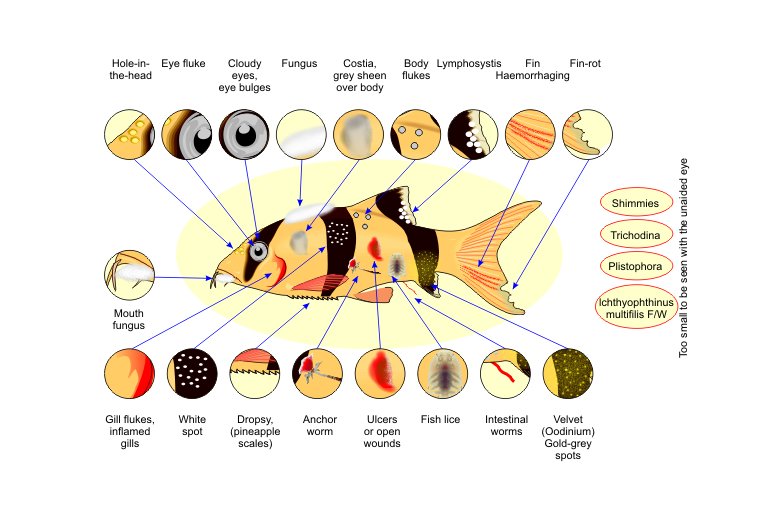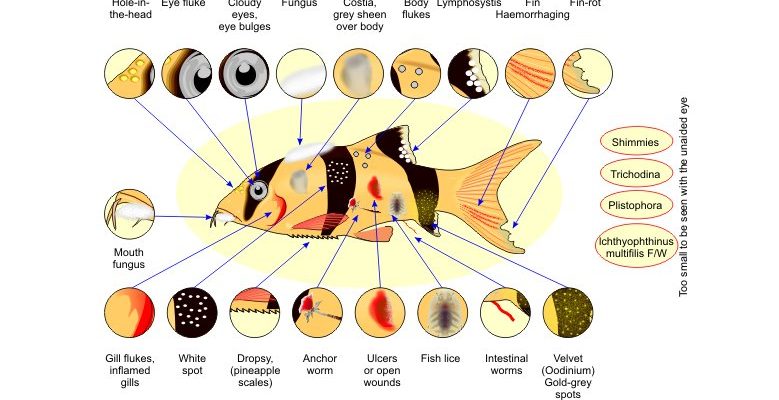
Now, you might be wondering why this matters. Well, healthy salmon not only provide us with a tasty meal but also play a crucial role in aquatic ecosystems. Plus, when salmon are sick, it can affect everything from fish farms to the environment. So, let’s dive into some of the common diseases in salmon and how to keep them swimming strong!
1. Infectious Salmon Anemia (ISA)
Infectious Salmon Anemia (ISA) is one of the most notorious diseases that can affect salmon populations, particularly in farmed conditions. It’s a viral disease that can spread quickly, leading to significant mortality rates among infected fish. Imagine a virus that zips through a crowd; that’s ISA in the salmon world!
The signs of ISA can include lethargy, pale gills, and swelling of the abdomen. Infected fish often display erratic swimming patterns, making them easy to spot during routine checks. Prevention is key here. Good biosecurity practices are essential. This means keeping the fish tanks clean and quarantine new fish before introducing them to the main population. Regular health checks can help catch any signs early, preventing a larger outbreak.
To minimize the risk of ISA, vaccination has become a common practice in many salmon farms. This helps boost the fish’s immunity and can significantly reduce the incidence of this disease. Think of it like giving your salmon a flu shot!
2. Bacterial Kidney Disease (BKD)
Next up is Bacterial Kidney Disease (BKD), which is exactly what it sounds like. This disease is caused by the bacterium *Renibacterium salmoninarum* and primarily affects the kidneys of salmon. It’s akin to how our kidneys work to filter waste; when the salmon’s kidneys are compromised, trouble follows.
Symptoms of BKD can be subtle at first. You might notice fish that are not feeding well or have swollen abdomens. As the disease progresses, it can lead to organ failure and ultimately death. The challenge is that BKD can stay hidden for a while, making it tricky to manage.
Prevention involves maintaining excellent water quality and avoiding stress for the fish. Stressed fish are more susceptible to diseases like BKD, similar to how we might get sick more easily when we’re tired or rundown. Regular cleaning of the tanks and ensuring proper diet can help keep salmon healthier and more resilient against this disease.
3. Sea Lice Infestation
Sea lice might sound like something you’d find in hair, but for salmon, these pesky parasites can be a real problem. Sea lice are tiny crustaceans that attach themselves to the fish and feed on their blood and skin. It’s like having an unwanted guest who just won’t leave!
When salmon are infested with sea lice, they may develop lesions and experience stress, which can lead to a range of health issues. You might notice fish that seem to be scratching against surfaces or have visible lice on their bodies. This infestation can spread quickly in crowded aquaculture environments.
To prevent sea lice, many fish farms implement treatment strategies like freshwater baths or the use of anti-parasitic medications. Regular monitoring is crucial. Just as you’d check for signs of pests in your garden, keeping a close eye on your salmon can help catch an infestation early.
4. Furunculosis
Furunculosis is another bacterial disease that can strike salmon. Caused by the bacterium *Aeromonas salmonicida*, this condition can cause severe skin lesions and internal infections. It’s like a bad infection that no one wants!
Infected salmon may show signs like swelling and ulcers on their skin, and in severe cases, they can even develop hemorrhages. This disease thrives in warm water, so temperature management in fish farms is critical. Keeping the water cool and clean can help reduce the incidence of furunculosis.
Prevention strategies include vaccination and maintaining good hygiene practices within the farming environment. Just as we keep our homes tidy to avoid sickness, a clean habitat is vital for keeping salmon healthy.
5. Columnaris Disease
Columnaris disease, caused by the bacterium *Flavobacterium columnare*, is another troublesome ailment for salmon, especially when they’re stressed or in poor water conditions. It can be likened to getting a nasty skin infection that requires immediate attention.
Symptoms can include gray or white patches on the skin or fins, and fish may exhibit erratic swimming behavior. The risk factors for columnaris often stem from overcrowded tanks or poor water quality.
To prevent this disease, focusing on water quality is crucial. Regularly testing and treating the water can help provide a healthier environment for the salmon. Practicing good hygiene—like cleaning tanks and equipment—will also reduce the chances of columnaris appearing in your fish population.
6. Prevention Strategies for Salmon Diseases
By now, you might be thinking, “That’s a lot of diseases! How do I keep my salmon safe?” Don’t worry, prevention is more straightforward than you might think. Here are some key strategies to consider:
- Maintain Excellent Water Quality: Regularly monitor pH levels, temperatures, and ammonia levels.
- Practice Good Hygiene: Clean and disinfect tanks, equipment, and even the area around your salmon farm.
- Monitor Fish Health: Keep an eye out for any unusual behavior or physical signs of illness.
- Isolate New Fish: Quarantine any new fish to prevent introducing diseases to your established population.
- Regular Health Checks: Regularly check the health of your fish and consult with a veterinarian if you notice any issues.
Implementing these strategies can significantly reduce the risk of disease outbreaks and ensure your salmon remain healthy.
7. Conclusion
Salmon are incredible creatures with an important place in both our diets and ecosystems. By understanding the common diseases they face, we can take meaningful steps to keep them healthy. From preventing infectious salmon anemia to managing sea lice infestations, it’s all about being proactive.
So, whether you’re a fish farmer or a salmon enthusiast, remember that prevention is the best medicine. Keeping the water clean, monitoring fish health, and practicing good biosecurity will go a long way in ensuring that salmon can thrive. Here’s to happy, healthy salmon swimming strong!

